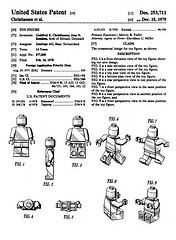 Editorial note: This is a guest post by Teemu Lang from Papula Nevinpat, a company focusing on industrial property rights – patents, trademarks and designs.
Editorial note: This is a guest post by Teemu Lang from Papula Nevinpat, a company focusing on industrial property rights – patents, trademarks and designs.
I have now worked for about a decade with high-tech startups that are heavily dependent on protecting their core technology with the tools provided by the global Intellectual Property system. I must say that I am more and more intrigued about the eagerness of some companies to file a great number of patent applications in proportion to their revenue at the outset. Admittedly, the companies in question are operating in such special fields of high technology where patenting is key to the company’s survival. I cannot nevertheless help thinking that this filing frenzy may be more related to the fact that the company is at a startup phase than to the field in which the company operates.
Time is a luxury which a startup company cannot afford; new products should be pushed to markets, i.e. published, without delay in order to rapidly move to the track of getting revenue as opposed to only consuming the funds of the, often impatient, investors. Ironically time is also a necessity for building a strong patent portfolio, which is essential for the company’s success in the long run.
In order to obtain a readily enforceable patent right with a broad scope for an invention, the inventor should have in depth knowledge about how his/her invention works; not because this would be a requirement dictated by patent law, which it is not, but because understanding the invention means understanding what should be patented. This is a requirement for drafting a good patent application. Patents are often being applied and granted for inventions which turn out to not producing the technical effect that was originally envisaged by the applicant. Only after filing the patent application, or even worse, after the patent has been granted, does the applicant realize through continuous R&D work that the invention works, and therefore should be defined, differently than how it has been defined in the filed application or granted patent.
R&D work and developing in depth understanding of the invention requires time and patience. Unfortunately, patent applications should be filed before the corresponding invention is published e.g. as a product launch or in marketing brochures, which, hence, results in a very pronounced conflict within emerging companies; a conflict between the efforts of building such a patent portfolio which would help the company in the long run, and the efforts of rapidly entering the market with new and innovative products.
Before this conflict is understood by the investors, many high-tech companies may be in for a surprise when they start evaluating how well their patent portfolio really protects their technology. This may happen even if the R&D strategy has been well aligned from the beginning with the rest of the corporate strategy.
—
About the writer: Teemu Lang is Director at Papula-Nevinpat and Registered Patent Attorney.
Teemu earned his degree of Master of Science in Engineering from the Helsinki University of Technology (now Aalto University) in 2003 and the degree of Doctor of Technology from the Helsinki University of Technology in 2007. He has been involved as a co-inventor in several inventions related to nanotechnology and has also written a number of scientific papers in the field. His experience in IP matters includes identifying and handling employer’s inventions, and drafting and prosecuting patent applications.
Image by aaron_andered





